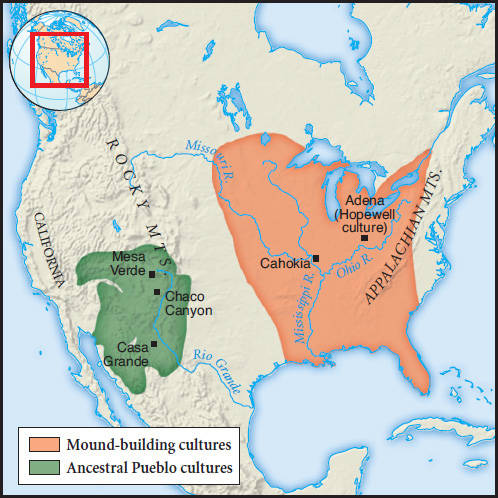Alternatives to Civilization: North America

The peoples of the Americas in the pre-Columbian era might be divided into three large groupings (see Map 12.5). The most prominent and well known are those of the Mesoamerican and Andean regions, where cities, states, and dense populations created civilizations recognizably similar to those of Afro-Eurasia. Elsewhere, gathering and hunting peoples carried on the most ancient of human adaptations to the environment. Arctic and subarctic cultures, the bison hunters of the Great Plains, the complex and settled communities of the Pacific coast of North America, nomadic bands living in the arid regions of southern South America—all of these represent the persistence of gathering and hunting ways of living in substantial regions of the Americas.
Even larger areas—the eastern woodlands of the United States, Central America, the Amazon basin, the Caribbean islands—were populated by peoples sometimes defined as “semi-sedentary.”22 These were agricultural societies, although less intensive and productive than those of Mesoamerica or the Andes and supporting usually much smaller populations. Nor did they generate large urban centers or inclusive empires (Map 6.4).
These peoples who lived beyond the direct reach of the major civilizations also made their own histories, changing in response to their unique environments, their interactions with outsiders, and their own visions of the world. The Anasazi of the southwestern United States, now called the Ancestral Pueblo, and the mound-building cultures of the eastern woodlands provide two illustrations from North America.